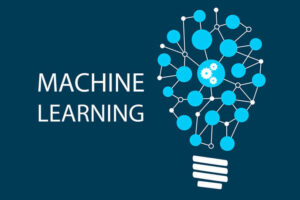
What Recruiters Can Learn From College Sports
Several years ago, I was a coach for the Loyola University Maryland women’s basketball team. We were underdogs in the NCAA Tournament, playing an acclaimed

Several years ago, I was a coach for the Loyola University Maryland women’s basketball team. We were underdogs in the NCAA Tournament, playing an acclaimed

Joe Milner, the talent acquisition manager at educational publishing and assessment giant Pearson, was at a campus event in Northern California when a company executive

Whether you’ve been in the HR or people management space for 2 years or 20 years, you’ve probably seen a lot of changes in terms

To be honest, I don’t talk about being a woman in business very much. I’m in a field that is filled with vibrant, brilliant, highly

As the snow is melting, you might be turning your mind toward warm-weather staples like baseball, barbecues and hiring season. Yes, hiring season. As a

A well-defined culture is the key to uniting your company and scaling to new heights, says author and high-growth company culture expert Brett Putter. Then

AI is here to stay. You are going to need to hire AI talent no matter what your industry is — and now is the

As they look for solutions to the talent crunch, U.S. employers increasingly are turning to international labor pools to fill critical workforce needs — even

With potentially groundbreaking HR technology solutions emerging, we’re seeing a tech boom that is fundamentally reshaping the way we work — and how we think

With 6 million job openings and about half of U.S. employees contemplating a job change, the hiring market seems straightforward. But before launching a broad

While smart companies of all types are investing more resources in worker engagement and development than ever, many manufacturers remain a step behind. In fact,

With unemployment at a historic low, even successful companies in thriving industries are struggling to find employees. Compounding this issue, Americans today are less willing

Virtual reality has generated a lot of headlines in recent years. For HR departments, the most talked-about use case for VR is employee training, where

AI is projected to catapult from a $643.7 million market today to $36.8 billion by 2025. Bersin by Deloitte calls it one of the ten

The shopping experience has changed a lot over the past 10 years. But the experience of applying for a retail job is pretty stuck in

It’s one thing to see AI coming our way in HR. It’s another thing to know the best ways to harness it to improve sourcing

How’s your candidate experience looking? And just as importantly, how does it stack up to your competition? In this year’s Talent Board candidate experience 2017

In a talent crunch, it’s easy for recruiters and hiring managers to focus on filling open slots. But that approach can give you tunnel vision

HR and recruiters don’t tend to take things at face value. For good reason: we’re called on to rely on our educated judgments. We’re in

Over my three-decade career, I have had the opportunity to work with many HR teams. Overall, if I had to grade HR’s effectiveness in bringing
An organization’s HR team can create advocates out of any applicant—even the rejected ones—by ensuring each candidate has a positive experience. But too many organizations

It’s no secret: Today’s employers are struggling to recruit top talent. Current government statistics tell us the U.S. employment rate was 4.1 percent in November.

Advancements in machine learning are beginning to change the way organizations approach recruiting. Here’s what you need to know.

The HR Technology space is a crowded one, and with that is fundamentally changing how we recruit, the processes, and how we view business. This
![6 Fixes That Immediately Improve Your Hiring Process [Infographic]](https://talentculture.com/wp-content/uploads/2017/08/6-Fixes-That-Immediately-Improve-Your-Hiring-Process-Infographic-300x255.jpg)
The “hiring is broken” reputation is a hard one for recruiters to shake and the hiring process is only predicted to become even harder this year. To